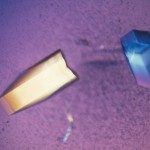Link to Pubmed [PMID] – 33402530
Link to DOI – e201052411810.1073/pnas.2010524118
Proc Natl Acad Sci U S A 2021 01; 118(2):
The recent emergence and reemergence of viruses in the human population has highlighted the need to develop broader panels of therapeutic molecules. High-throughput screening assays opening access to untargeted steps of the viral replication cycle will provide powerful leverage to identify innovative antiviral molecules. We report here the development of an innovative protein complementation assay, termed αCentauri, to measure viral translocation between subcellular compartments. As a proof of concept, the Centauri fragment was either tethered to the nuclear pore complex or sequestered in the nucleus, while the complementary α fragment (<16 amino acids) was attached to the integrase proteins of infectious HIV-1. The translocation of viral ribonucleoproteins from the cytoplasm to the nuclear envelope or to the nucleoplasm efficiently reconstituted superfolder green fluorescent protein or NanoLuc αCentauri reporters. These fluorescence- or bioluminescence-based assays offer a robust readout of specific steps of viral infection in a multiwell format that is compatible for high-throughput screening and is validated by a short hairpin RNA-based prototype screen.





